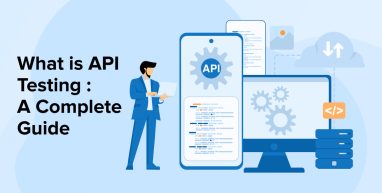
Today, every application is dependent on APIs(Application Programming Interface). As a result, it’s important to verify the APIs thoroughly before rolling out the product to the client or end-users. By 2030, the Global API Testing Market anticipates a growth of USD 4733.33, driven by the rising demand to verify APIs prior to utilization and their increased usage.However, some QAs still ignore this layer of the test pyramid by proceeding directly to UI testing – at their peril. In this article, we will go through API Testing in detail and see how to perform API testing.

1. What is API Testing?
API(Application Programming Interface) testing is a category of software testing that involves an API to directly verify and validate its functionality, mechanics, reliability, performance, and security. Testers or developers automate test scenarios in API testing to eliminate the need for manual executions. These scenarios might include:
- Make calls directly by connecting to an API endpoint.
- Simultaneously executing requests against multiple endpoints.
- Based on environmental variables, testing different versions of an endpoint. Such as time or device type.
API testing is performed to test whether a particular API meets pre-defined parameters or not.
— Rapid (@Rapid_API) October 24, 2022
API testing includes testing APIs in isolation to ascertain if they meet the functionality, reliability, latency, performance, security, and other essential parameters.
1.1 Types of API Testing
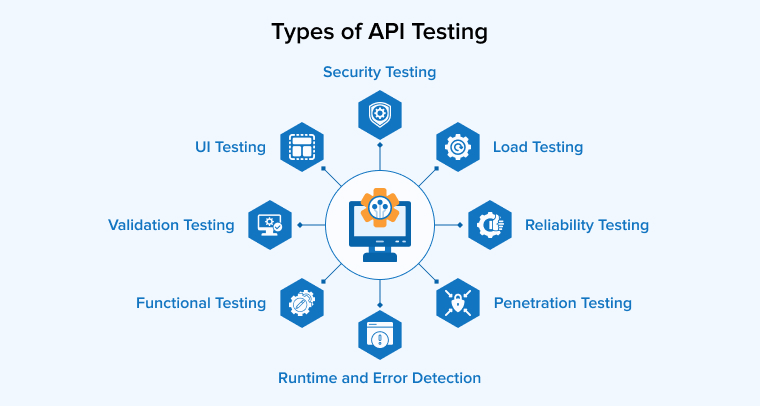
Here are some of the major types of API testing –
1. Validation Testing
In the development process validation testing plays a vital role during final steps as it verifies the aspects of product, behavior, and efficiency. In other words, validation testing is a guarantee of correct development.
2. Functional Testing
The code base includes specific functional testing. These features represent specific scenarios to ensure the API functions are properly within the planned parameters.
3. UI Testing
We conduct UI testing to evaluate the API user interface and its other integral components. The primary focus is on interfaces that connect the APIs rather than testing the APIs. Even though UI testing is not a specific test of API in terms of code base this technique still provides an overview of the health, usability, and efficiency of the app’s front and back ends.
4. Load Testing
Generally, teams conduct load testing after they have completed a specific unit or when they finish the entire codebase. The specific method helps to identify if the theoretical solutions work as expected. The load testing monitors the application performance at normal as well as in peak conditions.
5. Security Testing
The security testing makes sure that API implementation is secured from external threats. It also includes additional steps such as validation of encryption methodologies, the design of the API access control, user rights management, and authorization validation.
6. Runtime and Error Detection
The runtime and error detection indicate the testing for real-time execution of API particularly with the universal results of utilizing the API codebase. Monitoring, execution of errors, resource leaks, or error detection are the aspects where the technique focuses.
7. Reliability Testing
This testing makes sure that the API can produce consistent results and a reliable platform connection.
8. Penetration Testing
In the auditing process, Penetration testing is considered the second test. Here, the users with limited knowledge of APIs would try to threat vectors from an external perspective which is about functions, resources, processes, or the aim of the entire API and its components.
1.2 Benefits of API Testing
API testing is an approach that offers a great connection between platforms by making them scalable, safe, and reliable. Some of the benefits include the following:
- API test automation requires less code as compared to automated GUI testing which results in swift testing at an overall lower cost.
- API testing enables developers to access the app without a UI which helps testers to rectify the errors initially in the software development life cycle instead of it occurring to a major issue. This is cost-effective as errors can be rectified and resolved more efficiently.
- API tests are technology and language-independent where Data is exchanged using JavaScript Object Notation or Extensible Markup Language and it contains HTTP requests and responses.
- While analyzing the application the APi tests utilize extreme conditions and inputs that help to discard vulnerabilities and protect the application against malicious code and breakage.
- API tests can be integrated with GUI tests. For example, integration enables the creation of new users within an application before GUI tests are performed.
2. How to Perform API Testing?
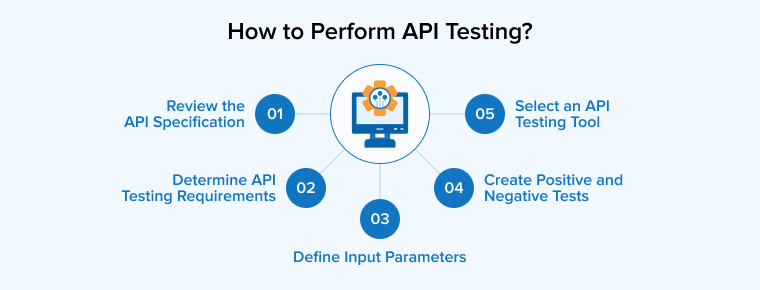
Here is how one can perform API Testing –
2.1 Review the API Specification
Before initiating testing, firstly you need to understand the purpose of the API and its functions. And what are the expected outcomes of using the API? For this, reviewing API specifications is a must.
For example, if you’re testing HTTP API, review the OpenAPI specification Encinitas defines a standard programming language-agnostic interface description for HTTP APIs. The specification details all the HTTP API’s objects, values, and parameters, how the objects are called, the function of each object, and how they can be used cumulatively. The following details describe how the Request Body Object is supposed to function, what its fixed fields are, what to expect when using this function, and request body examples.
2.2 Determine API Testing Requirements
Testers need to determine API testing requirements. This will understand the API’s target consumer, its features and functions, and the workflow of the application as well as the aspects, priorities, and problems you’re testing for. For example, testers want to ensure that the HTTP headers are as expected or response is received within a reasonable period as defined by the test plan.
2.3 Define Input Parameters
Before calling an API, input parameters must be initialized. These parameters pass needful information to the API which enables it to perform its function as it is necessary to determine whether the performed API is as expected. For instance, a REST API can accept query, header, and rest body parameters with other parameter types.
Before initiating API testing, it’s important to plan out all possible input combinations.
2.4 Create Positive and Negative Tests
To check where the API functions are as expected, the testing team runs a combination of both positive and negative tests.
- Positive tests are designed to check the basic functionality of the API using necessary parameters as well as extra functionality using optional parameters.
- Negative tests check how the API responds to operations that are prohibited from using valid and invalid user input.
2.5 Select an API Testing Tool
The readiness to select an API testing tool helps to automate or simplify the API testing process. While evaluating different API testing tools it’s very important to know what kind of API to be tested, what tests are meant to be performed and what is the budget to perform the needful.
3. Challenges of API Testing
As API testing provides various benefits it also produces challenges. The common constraints found in API tests are parameter selection, parameter combination, and call sequencing.
- Parameter selection is a difficult process to select the required parameters which are sent through API requests which are to be validated. However, it is necessary to ensure that all the parameter data meets the validation criteria such as using appropriate string or numerical data, an assigned value range, and conformance with length restrictions.
- Parameter combination can be challenging because each combination must be tested to see if it consists of problems related to specific configurations.
- Call sequencing is a bit challenging as every call that comes in needs to work correctly. Checking all the calls can become difficult, especially when one has to deal with multithreaded applications.
4. API Testing Tools
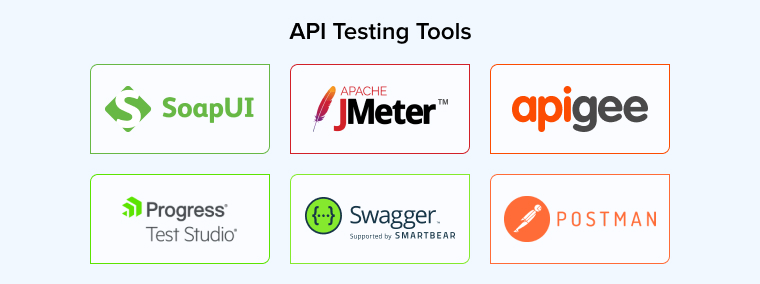
With the right API testing tools and processes, the software testing team can create a robust test suite. Here are some of the best API testing tools that can be considered for the same.
- SoapUI: This tool focuses on evaluating both REST and SOAP API functionality along with the web services. It’s an excellent tool for preventing API attacks as it has an easy-to-use GUI, offers enterprise-class capability, and makes it simple to create and execute automated functional, regression, and load tests.
- JMeter by Apache: This tool is a free and open-source load and functional API testing tool that measures performance and supports a whole range of protocols. Users can utilize it for testing dynamic web applications as well as static and dynamic resources, thanks to its support for request chaining.
- Apigee: A Google Cloud API testing tool that specializes in API performance testing. API gateways connect websites and services employing RESTful APIs to provide data feeds and enhance communication capabilities.
- Test Studio: This API testing tool enables the developers to test RESTful APIs by using automated & low-code methods. It also uses API calls to enhance automated functional UI tests.
- Swagger UI: An open-source tool that helps to generate a web page listing all the used APIs. This tool enables the development through the entire API lifecycle.
- Postman: Postman is a tool that helps testers to build better APIs quickly than other tools. With the help of Postman, one can collaborate and streamline each stage of the API lifecycle.
5. Common Bugs that API Testing Can Detect
API testing often uncovers several common bugs.
- Unused flags.
- API response times.
- Multithreading problems.
- Incorrect warnings and errors.
- Duplicate functionalities.
- Incompatible error-handling mechanisms Incorrectly structured response data.
- Missing functionalities.
- API reliability issues.
6. Best Practices for API Testing

Here are the top practices to follow when conducting API testing:
6.1 Automate Your API Tests
Automating the API tests is one of the most popular practices that every software testing company follows.
In this scenario, developers utilize specialized software tools actively to automate the creation and execution of API tests. This practice enables the creation of automated tests, runs scripts, and generates test reports more efficiently than manual testing. In addition to this, automated testing is an approach that enables one to test API and identify bugs more thoroughly that might have been missed during manual testing.
Further Reading on: Automated Testing vs Manual Testing
6.2 Keep Your Tests Organized
When the API testing teams organize tests, they efficiently manage the test suites. This also helps in identifying and fixing issues in an easy manner. The most popular way to organize the testing process is by grouping tests by test type, functions, or endpoint. Naming conventions not only aid in quickly identifying and locating tests but also enable consideration of them.
6.3 Run Tests Throughout the API Lifecycle
When testers run API testing throughout the development life cycle, it can help in finding bugs and ensuring that API works correctly in all the different phases. This also benefits in identifying buys before they become a major issue for any applications. Therefore, actively conducting tests throughout the API lifecycle helps minimize the errors that developers may encounter in the final product.
6.4 Write Reusable Subtests
While testing an API, testers must write reusable subsets because they facilitate the creation of modular test scripts, which testers can further reuse as needed for other APIs. In addition to this, generating reusable subsets can also help in improving the efficiency of the entire testing process and save a lot of time as testers won’t have to go through the process of creating a new test for every API. It also ensures that the tests carried out are consistent and makes it easier for the testing teams to compare the testing results along with the bugs.
7. Conclusion
As seen in this blog, API Testing is a unique process to send requests on an API and manage the responses. With this approach, the developer can write reusable subtests, keep tests organized, and automate the API tests. The stakeholders anticipate that this concept will grow and provide a testing process that is repeatable, accurate, and efficient.


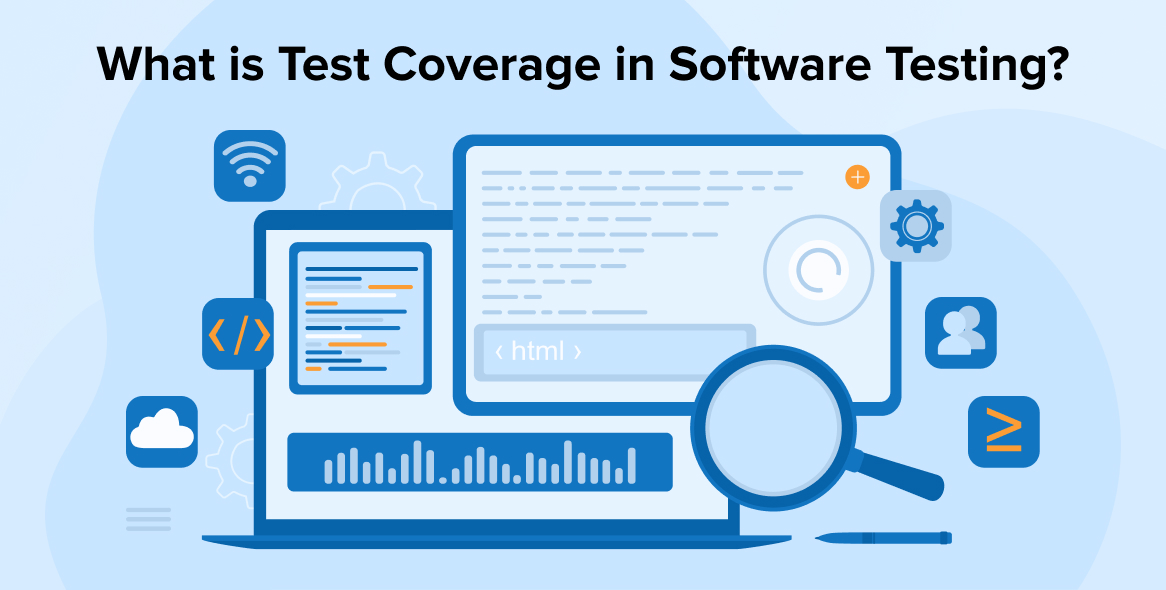
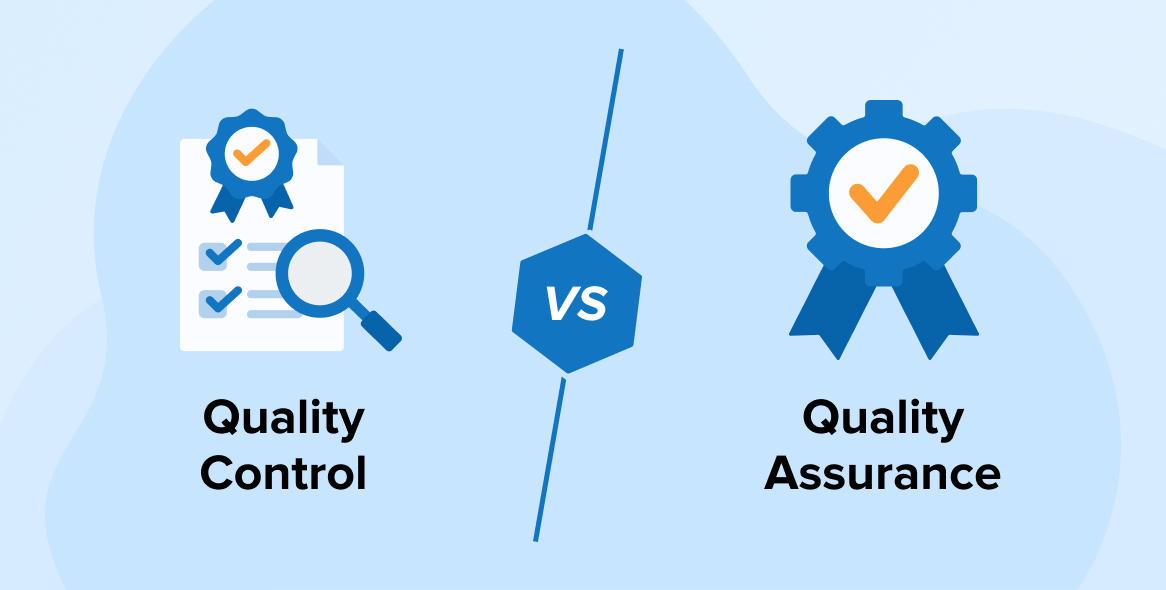
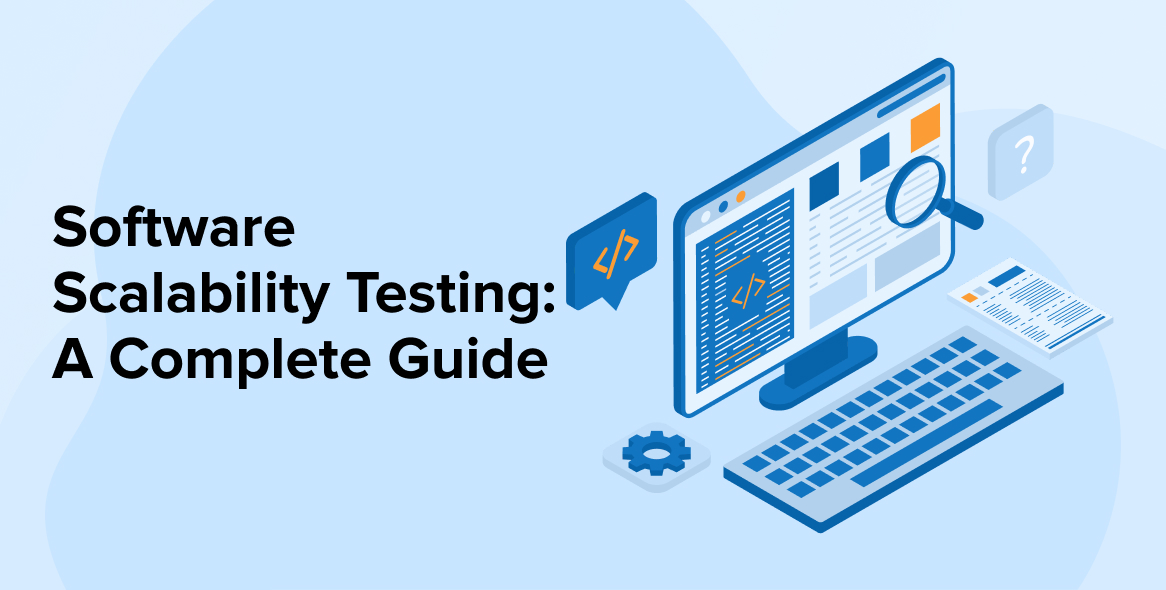

Comments
Leave a message...